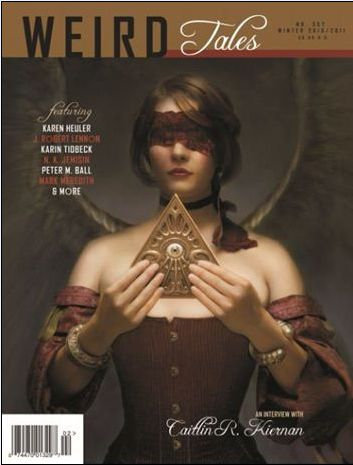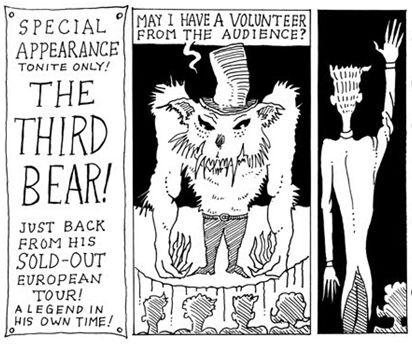Jeff VanderMeer's Blog, page 70
January 27, 2011
Thursday Linky Links and News: Duchamp, Mamatas, Nabokov, Narayan, and More

I've been remiss in not signal-boosting some of my own Omni posts and linkage to stuff by others in the last couple of weeks. So here're some links.
First off, Shweta Narayan's novelette "Eyes of Carven Emerald" is a free read on SF Signal, in case you hadn't noticed.
On Omnivoracious, I've been posting about e-books and also Nabby and also the PKD Award…
Infinity Plus starts producing e-books
Your momma starts producing e-books
Jason Sanford takes over the world
Dalkey Archive's top 10 list of cool stuff they didn't publish
Editors get to tell why they bought the books on the PKD list
I've also just blurbed two books:
Nick Mamatas' Starve Better: "Mamatas offers up a no-nonsense guide that should be required reading for all writers. Prepare to have some illusions shattered… because you need them shattered. A great resource from a guy with the experience to back up the advice."
L. Timmel Duchamp's collection Never at Home: "A new collection from L. Timmel Duchamp is cause for celebration. Duchamp's short fiction is compassionate, sharp-eyed, intelligent, and often ingeniously structured. These stories take us places we haven't been before. Never at Home once again showcases a unique, essential voice." (no order page yet)
I'm working slowly on a two-part blog entry about editing anthologies, along with a post for Booklife refuting the claim that book tours are pointless in this day and age.
In other news, the Lambshead Cabinet antho table of contents should be posted in the next couple of weeks, and the table of contents for The Weird will be posted in the next six weeks.
Set-up work on Leviathan 5 continues apace, including gathering together the necessary foreign language editors. It's a very incomplete list so far, but Jukka Halme, Gio Clairval, Luis Rodrigues, Larry Nolen, Karin Tidbeck, and Edward Gauvin have already joined our merry band.
Finally, we're working very slowly on a new bestiary antho to be illustrated by Ivica Stevanovic. We have manuscripts in hand from, among others, Dexter Palmer, Rhys Hughes, Michal Ajvaz, Reza Negarestani, Karen Lord, Cat Rambo, Stephen Graham Jones, Vandana Singh, and Brian Conn.
Thursday Linky Links and News: Duchamp, Mamatas, Nabokov, Narayan, and More originally appeared on Ecstatic Days on January 27, 2011.




Shriek: An Afterword Now Available on Kindle
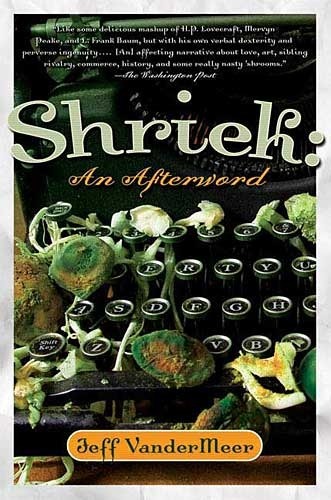
If you look at the Amazon.com reader reviews for my novel Shriek: An Afterword, it's either the best thing since sliced bread or a plotless pile of crap. Now e-book afficionadoes can decide for themselves, as Tor has finally made it available for the Kindle.
When Shriek came out in 2006, it received a starred PW review, made many year's best lists, including Amazon and the San Franciso Chronicle, and has been reprinted in the UK, Poland, Russia, and Germany. But it deeply divided my readers, again between those who were enthralled by it and, basically, those for whom the humor of the book didn't connect and who were unwilling to accept a narrator perceived to be as deeply flawed as Janice Shriek. Although the book got some really good responses, hardly anyone grappled with the central themes and concerns of the novel (although this did a good job). I still hope someone will someday give the book a good critical analysis.
Here's the official website for the novel, including a link to the infamous Shriek short film, which turned out a lot more, erm, experimental than I'd hoped. It did, however, result in a somewhat ground-breaking series of movie/book parties, most of them organized by readers, to whom I'm forever grateful. I'm also really grateful to the Church, who did an awesome soundtrack for the book and did voice-over for the film.
Here's the link to order the limited edition, including soundtrack.
Shriek: An Afterword Now Available on Kindle originally appeared on Ecstatic Days on January 27, 2011.




January 25, 2011
Steampunk in Poland (and more trip details)
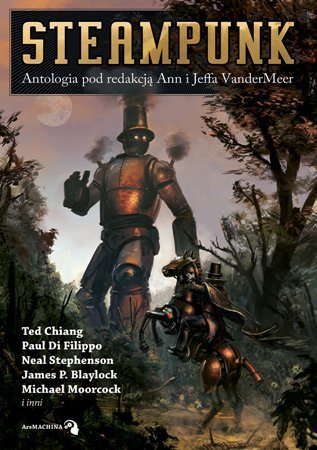
Per this site, that's the cover of the Polish edition of the Steampunk anthology.
Some details about my trip to Poland have been finalized. I'll be there April 2 through 4, and Scottish writer Neil Williamson will be joining me. Thanks to Konrad Walewski for being the principle mover-and-shaker behind getting me to Poland. Details of specific events will follow.
After Poland and a stop in Amsterdam to visit family, Ann and I will be traveling to Finland for a weeklong VanderCon, events to be announced.
Steampunk in Poland (and more trip details) originally appeared on Ecstatic Days on January 25, 2011.




Reza Negarestani and the Dark Materialism Symposium

Update: And an interesting, related, blog.
Here's the link to the content from a recent symposium, said event described below. It includes a link to a paper by Reza Negarestani that he was unfortunately not able to give in person due to being refused a visa to the UK. If you've been reading this blog, then you know that I believe Negarestani is a stone-cold genius and the future of weird fiction, in addition to the thought-provoking nonfiction he writes. His story in the Lambshead Cabinet anthology is just quite simply a thing of beauty on so many levels. It's mind-blowing.
(As a side note it is a little discouraging to see the recent horror best-of table of contents appear to be largely a time machine to fifteen years ago. No diss of the fine writers included, but it doesn't at all reflect the energy of the last five years in weird fiction. This on the heels of two very conservative bests of the last two decades…I'm thinking perhaps a "best of the weird" yearly antho might be needed.)
This symposium draws on recent paradigms in contemporary philosophy, physics and critical theory. It assembles unique and multidisciplinary reflections on the idea of darkness in its relation to matter in diverse locations, namely: physics, astronomy, ecology, mysticism, speculative realism, psychoanalysis and literature. As a conceptual framework, dark materialism engages with matter at the thresholds of its annihilation and disappearance beyond the topographies of 'base materialism' and at the very edges of forms of thought where the objects, things, Things and no-things on which it depended exert their independence.
Reza Negarestani and the Dark Materialism Symposium originally appeared on Ecstatic Days on January 25, 2011.




Rezai Negarestani and the Dark Materialism Symposium

Here's the link to the content from a recent symposium, said event described below. It includes a link to a paper by Reza Negarestani that he was unfortunately not able to give in person due to being refused a visa to the UK. If you've been reading this blog, then you know that I believe Negarestani is a stone-cold genius and the future of weird fiction, in addition to the thought-provoking nonfiction he writes. His story in the Lambshead Cabinet anthology is just quite simply a thing of beauty on so many levels. It's mind-blowing.
(As a side note it is a little discouraging to see the recent horror best-of table of contents appear to be largely a time machine to fifteen years ago. No diss of the fine writers included, but it doesn't at all reflect the energy of the last five years in weird fiction. This on the heels of two very conservative bests of the last two decades…I'm thinking perhaps a "best of the weird" yearly antho might be needed.)
This symposium draws on recent paradigms in contemporary philosophy, physics and critical theory. It assembles unique and multidisciplinary reflections on the idea of darkness in its relation to matter in diverse locations, namely: physics, astronomy, ecology, mysticism, speculative realism, psychoanalysis and literature. As a conceptual framework, dark materialism engages with matter at the thresholds of its annihilation and disappearance beyond the topographies of 'base materialism' and at the very edges of forms of thought where the objects, things, Things and no-things on which it depended exert their independence.
Rezai Negarestani and the Dark Materialism Symposium originally appeared on Ecstatic Days on January 25, 2011.
January 24, 2011
Weird Tales: Submission Portal, Pay Raise, and More!
My wife Ann, the editor at Weird Tales, forwarded me this press release about some pretty cool new developments at the magazine. What this also means is that Ann will be blogging on the new Weird Tales site, as time allows (I think she's going to talk about the editorial assistants next), along with Paul Guran and Mary Robinette Kowal! Go to the new website and check it out. – JeffV
Several exciting developments mark the start of 2011 for Weird Tales. In addition to launching a new website , editor-in-chief Ann VanderMeer and publisher John Betancourt have raised the pay rate to 5 cents per word and implemented a new submissions portal for potential contributors.
These changes come on the heels of the news last year that VanderMeer would be taking over as editor-in-chief, with Paula Guran retained as nonfiction editor and Mary Robinette Kowal named as art director. This is the first time in the magazine's 88-year history that Weird Tales has had an all-female editorial/management staff. Dominik Parisien and Alan Swirsky join Tessa Kum as editorial assistants on the Weird Tales team.
"Weird Tales was always known for publishing unclassifiable dark fiction, for publishing new voices alongside old pros, and we'll continue that tradition," VanderMeer says. "Our website updates those traditions by posting video flash fictions and news of the bizarre." The new site also features a blog, through which VanderMeer and the rest of the Weird Tales team will discuss fiction and topics related to the revamped magazine.
This month marks the publication of the 357 issue of the magazine, featuring exceptionally strong short fiction. Contributors include Hundred Thousand Kingdoms' N.K. Jemisin with "The Trojan Girl", Swedish newcomer Karin Tidbeck's ingenious and unsettling inversion of faerie and critically acclaimed J. Robert Lennon with "Portal," a disturbing Shirley-Jackson-esque horror story. Weird Tales will return to its normal quarterly schedule this year, with future issues slated for May, August, and November.
Thanks to Matt Kressel for the new website and Neil Clarke for the submissions portal.
Weird Tales: Submission Portal, Pay Raise, and More! originally appeared on Ecstatic Days on January 24, 2011.
January 23, 2011
The Third Bear: The Lives of Short Stories
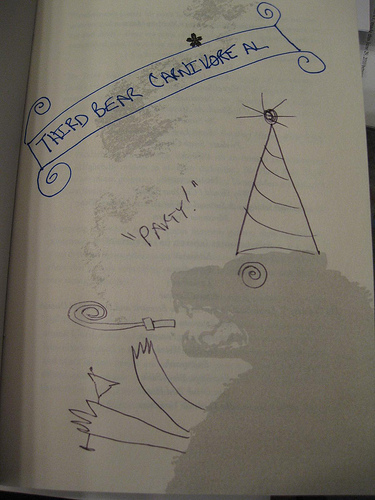
(Click here for music feature, free downloads, and other linkage.)
Novels have secret lives and extended lives, periods of initial interpretation and re-interpretation that accrete around the actual writing, initial publication, surges in interest or of dis-interest, and new editions. Novels become like scarred and barnacle-encrusted ships. Eventually they're refurbished, perhaps even given a re-enforced hull, or they chug along in a state of ever-more apparent neglect. Sometimes, too, they're left in dry dock, scuttled, run aground by false lighthouses, or pulled apart for salvage.
Short stories (and novellas) endure a different fate, one more akin to the process by which sea turtles reproduce. Hundreds of eggs are laid and eventually hundreds of baby turtles hatch and frantically make for the sea, many of them getting picked off by birds or crabs. Once they reach the sea, even more get eaten by fish and other predators. Some run afoul of fishermen's nets after they reach maturity. Short stories, by dint of their initial appearance in magazines or anthologies, are more like sea turtles than ships. Some never make it out of the shell. Those that do frantically seek publication, but only a few make it that far. Of the ones that do, most are destined to be ignored and never heard from again. Only a handful make it all the way to some kind of prominence or recognition.
That may be stretching a metaphor to the breaking point, although I like the image of stories like baby turtles flopping down the beach to the sea. But it is true there is a process of attrition on the route to publication, and even afterwards.
There's also a process of evaluation and re-evaluation—of initial, layered perception followed by a quality of renewed encounters. After first publication in a magazine or anthology, a story undergoes public interpretation through the medium of reader blog entries, tweets, and facebook status messages. It also encounters and is analyzed, and in the process of analysis transformed, by the formal reviews it receives from various media outlets. Depending on the method of publication, there may be multiple interpretations or only one or two. Depending on the author's credentials, the story may have started from a baseline of expected enjoyment or one of indifference–or worse. (Indifference often requires active thought to reach a state of inaction.)
Throughout this process, as through the process of having a novel made available to readers, the conclusions reached may either solidify around one central story or plotline (this is great/this is subpar) or may diverge wildly as to the determination of quality, intent, and strengths versus weaknesses.
However, this is only part of the process for a short story. The narrative defining it or any piece of fiction can be altered by one prominent review, one powerful Adopter or Dis-enchantee, at which point, human nature being what it is, the fiction in question is now transformed again, for the better or the worse, in the collective perception. Awards season—including publication in year's best anthologies—can also alter this narrative, raising up what was forgotten or dismissed and ignoring what was originally considered better or more original. The public perception shifts yet again. (The story, it must be noted, hasn't changed by a single word.)
Following this cycle, a rare story or novella may become so popular it lives on, regardless of it being perceived as part of the past, through the reanimation of reprint anthologies and further commentary by readers and reviewers. But most stories at this point, to use a different analogy, enter into a kind of stasis. They've flared up briefly, their light has been acknowledged to some degree, and then, flickering out, they descend to the firmament, to become part of the sedimentary layer of speculative fiction.
Stories come out of stasis and are subject to another round of interpretation when they are placed in the context of a collection. Sometimes they've been inactive, inert for years before this occurs, and part of their re-interpretation occurs because readers or the publishing environment has changed. Thus what was shiny and new five years before can now appear stilted, too mannered, or blind to current social realities. Thus what was seemingly incomprehensible or "too weird" or seemingly irrelevant can now appear to be prescient or cutting edge.
However, a second type of re-evaluation occurs because of the nature of a short story collection. The stories in a well-considered collection communicate with one another, and create associations between one another that changes perception of individual tales. The repetition of theme or subtextual elements, even the subtle repeating of a charged/symbolic image, can spark a flame in a reader's mind that becomes a fire across several stories. Patterns emerge that are either pleasing and stimulating and encourage questions and a certain open-endedness or patterns emerge that close down discussion, with repetition seeming like a grinding slog. The fire stimulates and feeds the imagination, or it burns everything down leaving a blackened field.
A collection also allows for readers to revisit stories. That which in a possibly hurried online skim seemed either obvious or too luminous for its own good can, on a re-read, provide great satisfaction to a reader. The connections or possibilities that the writer embedded in a story may, in this context, now haunt a reader rather than confound. In all ways, stories at this point will reveal their true nature—and whether they were meant to be read once or twice, or multiple times. Then, too, the reviewers will render their opinions, often different reviewers because the story appears in a collection rather than a magazine, and because some of the reviewers have changed in the interval between initial publication and inclusion in a collection. The author has also changed in the interval, and widely held perceptions of the author and their work have shifted over time, creating potential good will or indifference that did not exist before. Once again awards season will change perceptions. And on it goes…
Consider, for example, my 2010 collection The Third Bear, which has been blessed with blurbs from Junot Diaz and Mike Mignola, along with starred library journal reviews and year's best mentions. The stories in it that have had the most distinguished initial publication history are not necessarily the ones now most lauded as part of the collection ("Three Days in a Border Town" or "Fixing Hanover," easily the most popular story pre-collection but not much remarked upon in Third Bear reviews.) Stories that were passed over for awards or for year's best collection are now praised highly. ("The Goat Variations"; "Appoggiatura" is the best story I will ever write, but I don't get to establish the record…) Stories that appeared in indie press publications and received little comment at the time now have a powerful effect. That which was deemed too experimental before, and branded "difficult", is now hardly remarked upon, the barriers to the reader apparently now dissolved simply by the passage of time. I am either a startling new talent or an accomplished old hand demonstrating mastery. Then, too, you tinker with the stories, and sometimes even cutting a paragraph or re-arranging exposition can make a story burn more brightly for readers.
Is it telling that the story causing the most confusion is "The Quickening," the only one written specifically for the collection? Perhaps. Perhaps not. It comes with no bona fides, like prior publication or acclaim, but it is also deliberately open-ended, about a talking rabbit that may not be a rabbit. How will this story settle into reader and reviewer imaginations over time? Will it become a comfortable fit, or will it ultimately be rejected? Will it be included in some omnibus collection of my fiction a decade from now and pointed to as an example of something, or will it wind up not making that cut? I don't know. I don't even know how I'll feel about the story in another year.
Certain kinds of stories do continue to live on for the writer as well as the reader, and the writer goes back to them more than once looking for that initial thrill of discovery that went into the writing of them, looking to see if they've changed, if they're something different now. So that in creating a collection, a writer is also re-entering the process, re-evaluating the work, hoping it will still surprise. The writer is also re-visiting the secret autobiography of a period of time—in this case, for me, the past five years, and stumbling across the signs and symbols that constitute an encrypted diary or journal readable only by the writer.
For me, personally, too, over the past five years, my writing style has lost some of its baroque qualities, trading them in for stealth, for working harder at making sentences do five or six things at once. Once, I would've traded everything for just one more eye-popping boschian detail. This isn't a dishonorable intention, but now I'd like to trade everything for quite different results. That transition is documented in this collection.
I've been very humbled and happy with the response to The Third Bear—it has largely accreted and cemented reader satisfaction with the stories, and this process is still occurring now, six months after publication, with readers encountering the book and being energized enough by it to blog about it—some of those recent responses noted below.
I've delved into these cycles of reader and reviewer interpretation of stories because I find perception shifts fascinating as a writer, especially as a writer who obstinately achieved book publication by ignoring the naysayers and years of rejections…only to have the same material widely praised upon publication. And also to explain why I do not necessarily put much stock in any individual opinion, or even trends of opinion, about a particular piece of fiction I've had published, especially short stories and novellas—nor even stock in the initial high or lower status of the eventual place of publication.
I always try to remember upon initial publication of a story that this publication is only the start of a much longer cycle, and that while I can celebrate when something seems to initially capture reader or reviewer imagination, I should conversely not be particularly dismayed if a story I believe to be strong doesn't catch on immediately. Remembering all of this makes it much easier to move on to the next story, and the one after that. The only real way to navigate the world is to continue to write what's personal to you and to serve your readers and reviewers by appreciating the privilege of their attention while not catering to its positive or negative conclusions.
Recent reactions
Appreciates the weird qualities and focuses on, among others, "The Situation" and "Shark God".
Appreciates and recommends the collection but couldn't get past "The Third Bear" because of the horror, expressing viscerally what I mean "The Third Bear" to do: all of the rest of the collection is in a sense an afterlife. (Note: skip "The Third Bear" and "Predecessor" if visceral horror bothers you.)
Appreciates the deeply unsettling nature of the collection with special emphasis on "The Situation". (Linked to from his year's best list.)
Appreciates the nightmare qualities of the stories.
The Third Bear: The Lives of Short Stories originally appeared on Ecstatic Days on January 23, 2011.




January 19, 2011
The Third Bear–Music Notes and Free Downloads
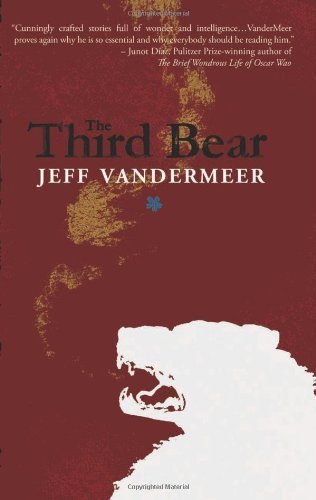
Largehearted Boy has posted a music feature about my 2010 collection The Third Bear:
At base, it's a collection that's about the search for something beyond what we know—a search either forced upon the protagonist or eagerly sought out by that person. It's also an acknowledgment that certain things will always be beyond our ken. The stories, in terms of music, seem to me to be coiled and constantly turning in on themselves, with the counterpoint of moments that burst free from that maze. I don't know if that makes any sense, because I'm trying to convey a feeling in my brain that probably can't be put into words.
The feature includes an exclusive free PDF of the only original story in the collection, "The Quickening" (2010). This is also the only original story I had published in 2010*, in terms of awards consideration.
What's "The Quickening" about? A rabbit that may not be a rabbit and some seriously effed up people. (I expect letters.)
The Third Bear has been one of the best-reviewed collections of 2010, with starred reviews in Publishers Weekly and Library Journal, among others. It was blurbed by Junot Diaz and Mike Mignola. It's also made several year's best lists. Here are the links to today's feature plus some other relevant material:
GeekDad link to the e-bear free PDF book of appreciations of stories from the collection:
All royalties received from The Third Bear will go to supporting the translation component of the Leviathan 5 anthology project. As ever, of course, a donation is your most direct option.
* Besides "A Secret History of Steampunk" in Steampunk Reloaded, which is part frame, part meta, and meant to highlight the work of others.
The Third Bear–Music Notes and Free Downloads originally appeared on Ecstatic Days on January 19, 2011.




Steampunk Reloaded, for Your Consideration

(Image from artist Ivica Stevanovic's blog–Ivica contributed two images to the anthology.)
I'm not one for pushing projects I'm involved with for awards, but because we edit anthologies that more and more have a significant visual component and also mix original fiction with reprints, I'd just like to remind those who picked up Steampunk Reloaded (2010) that it contained three bona fide original stories:
Jeffrey Ford, "Dr. Lash Remembers" – A harrowing tale of Steampunk disease that will make you think twice about jumping into an airship.
Jess Nevins, "Unpublished Pages from the Encyclopedia of Victoriana," featuring three failed Steampunk inventions.
Ramsey Shehadeh, "The Unbecoming of Virgil Smythe" – A fast-paced, riveting tale of time slips and the perils of colonialism, featuring the enigmatic Dromedons, rebellion, and a very strange train ride.
It also included a translation that has never before appeared in English to our knowledge:
Vilhelm Bergsoe, "Flying Fish (Prometheus)", translated by Dwight R. Decker – A novelette from 1869 by a Danish writer. This progressive tale of the dirigible Flying Fish, written in the form of a letter from the future to the past.
There is, of course, also the original "A Secret History of Steampunk" by yours truly, but that was meant almost as much as a vehicle for an assemblage of other texts and images by a group much more talented than me and I'd prefer the spotlight be on them. (Full list here.)
Not to mention original nonfiction. And plenty of refutation to the claim of Steampunk as reactionary in the form of stories by Cat Valente, Caitlin R. Kiernan, Margo Lanagan, and others. (What I think about this subject can be found here and here.) And not to mention a rather stunning layout and design by John Coulthart.
The anthology was the juggernaut that also allowed us to do outreach in the form of Brazilian/Portuguese translations from Vaporpunk (thanks Fabio and Larry and Beyond Victoriana!) and post a story by Jacques Barcia on the Tachyon website.
Which is another way of saying, when we do a reprint anthology these days, it's a lot more than just a collection of 12 to 20 stories placed in a certain order.
Ann and I believe this is the future of anthology editing, and I'll talk more about anthology editing in the 21st century in a blog post once a certain website posts the full contents for The Thackery T. Lambshead Cabinet of Curiosities.
Steampunk Reloaded, for Your Consideration originally appeared on Ecstatic Days on January 19, 2011.




January 17, 2011
Three Fine Fools Get a Schedule: Triangulated Blogging on Gerry Alanguilan, Eric Basso, Javier Marias, and Helen Oyeyemi
If you've followed this blog lately, you know that Larry Nolen, Paul Charles Smith, and I have formed a blogger book club. Every few weeks we read a book and then post our reviews of it, without sharing our opinions with each other ahead of time. I then also post the book info and snippets of the reviews to the Amazon book blog. So far, we've covered Grace Krilanovich's The Orange Eats Creeps, Matt Bell's How They Were Found, and Michael Cisco's The Narrator (with guest J.M. McDermott).
Since these reviews have seemed useful in spreading the word about under-appreciated weird books, we thought we'd continue—and not only continue but formalize a schedule for those who want to read along. If you do read along and post a review around the same time as ours, I'll add the link to our coverage.
Here, then, is the tentative schedule for our posts, which we'll update with each new round of book reviews.
[image error]
Early February: Elmer by Gerry Alanguilan (graphic novel)—"Gorgeously drawn black-and-white artwork combines with outstanding storytelling in this modern-day fable of ethnic strife, identity, friendship, and family. The titular character has been a writer all his "human" life, keeping a secret diary that his son Jake discovers and reads after Elmer's death. Along with his newly engaged sister and gay movie-star brother, Jake returns to his childhood home for Elmer's last days, stays on for his funeral, and helps his newly widowed, delicate mother. Oh, and Jake and family are sentient, well-spoken chickens."
Late March through May: The collected works of Eric Basso. This writer of what I would call avant garde gothic/weird literature is criminally under-appreciated and under-reviewed, and requires an extensive re-visiting. (His "Beak Doctor" is included in Ann and my The Weird antho from Corvus.) Therefore, we will be reading multiple texts, with others read as reference points for the main volumes under review. We'll have writer Matthew Pridham joining the team as a special guest sharing his opinion as well. We will cover, in multiple blog posts:

The Beak Doctor and Other Stories: 1972 to 1976—"For years, Eric Basso's novella, "The Beak Doctor," has sustained a cult reputation among a hard core of avant-garde writers. This collection of short stories begins with a tale of death and hideous resurrection, moves on through a quest for the great horse who rules a subterranean polar kingdom, an atmospheric cycle of short prose pieces, a tragicomic roman noir set in Istanbul (in which the great horse appears in a new guise), and concludes with the harrowing odyssey of a masked man in a fogbound city turned upside down by a plague of sleeping sickness: "The Beak Doctor."

The Golem Triptych: A Dramatic Trilogy—"According to Jewish legend, the golem is an automaton in human form created through magic, a spirit that could be called upon to perform tasks for its master. The central character in this dramatic trilogy, Joseph Golem, is an old man who dies in a prison camp and is brought back to life by a young woman. Moving through time and various identities, Joseph finds himself in 16th-century Prague, where he assumes the identity of Rabbi Judah Loew, creator of the golem."

Bartholomew Fair (novel)—"Set in London during a killing heat wave, the novel unfolds as a terrible cataclysm is about to devastate the city. Begun in the Middle Ages as a religious festival in commemoration of St. Bartholomew the Great, over the centuries Bartholomew Fair passed through several metamorphoses. Now it has gone underground. Its lone survivor recounts the story of the Fair's final, sordid incarnation, and the bizarre odyssey which brings him face-to-face with the unspeakable."

The Sabattier Effect (novel)—"An investigation into the death of an old man takes place in a French village, but nothing about this investigation is as it first appears. Its prime witness, a photographer, is interrogated by a police inspector about the dead man, his connection with two mysterious younger women, and the enigmatic painting the man had hired him to photograph. His account of events triggers a series of flashbacks in which the immediate past comes dangerously alive. The investigation becomes a desperate quest to rescue a present threatened with extinction by the unpredictable past that is about to engulf it."
We will also be reading and referring to the following by Basso:

Decompositions: Essays, Art, Literature 1973-1989—"Decompositions collects all of Basso's essays on art and literature in one volume. Basso approaches his subjects not as a critic but as an artist reflecting on the works, lives, deeds and frailties of other artists. These studies cut to the quick of what it means to create, and be created or destroyed by, a great poem, story, novel or painting."

Revagations: A Book of Dreams, Vol. 1: 1966-1974—"In these pages, we discover an unconscious life laid bare in a myriad of bizarre adventures and intrigues."

Accidental Monsters: Poems and Texts 1976—"Completed in six months, on the eve of the poet's twenty-ninth birthday, Accidental Monsters was Eric Basso's first collection of poems. The author carries us through a world where landscapes and interiors merge, a terrain vague of fleeting visions, gnomic adventures, enigmas, grotesque creatures and bizarre mechanisms. We eventually journey to an unnamed planet, and are witness to several sinister tableaux."

Catafalques: Poems 1987-1989—"A dark magic works here, sustained by poetry that is often complex, ironic, disquieting, impassioned, and sometimes even wildly comic. In these pages we are confronted with the poet in midair, the Walrus Voluptuary, a tree that becomes a woman, a man with the head of a black swan."
June-July: Your Face Tomorrow by Javier Marias. Writer Kai Ashante Wilson, who suggested Marias' work, will join us as a special guest blogger. This is a three-volume novel, and will probably require three separate posts. Here's a description from PW of volume one: "In his leisurely, incisive latest, these preoccupations fuel a plot with a spy-novel gloss. Jaime Deza, separated from his wife in Madrid, is at loose ends in London when his old friend Sir Peter Wheeler, a retired Oxford don, introduces him to the head of a secret government bureau of elite analysts with the ability to see past people's facades and predict their future behavior. A cocktail party test proves Deza to be one of the elect, and he goes to work clandestinely observing all sorts of people, from South American generals to pop stars."
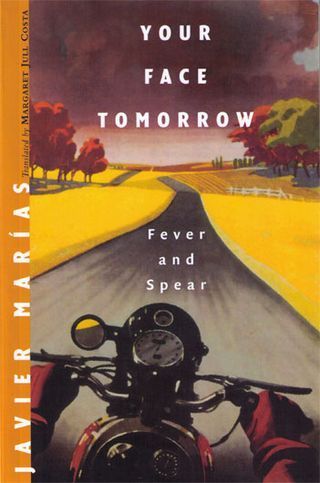
August: Helen Oyeyemi, novel(s) to be determined.
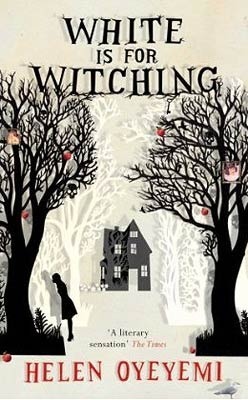
Three Fine Fools Get a Schedule: Triangulated Blogging on Gerry Alanguilan, Eric Basso, Javier Marias, and Helen Oyeyemi originally appeared on Ecstatic Days on January 17, 2011.





